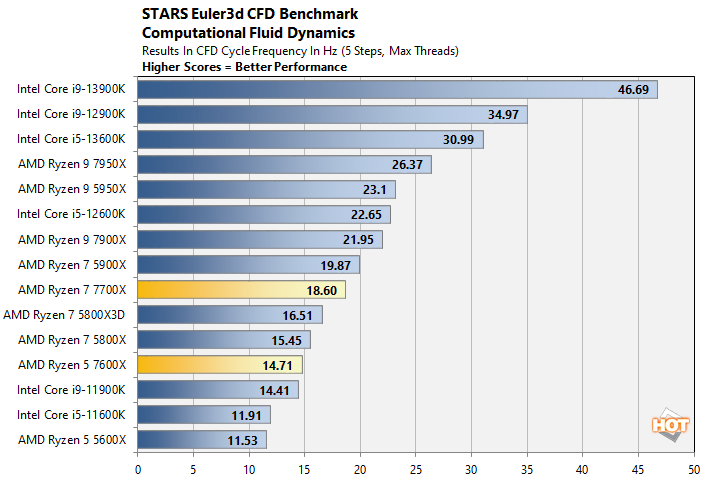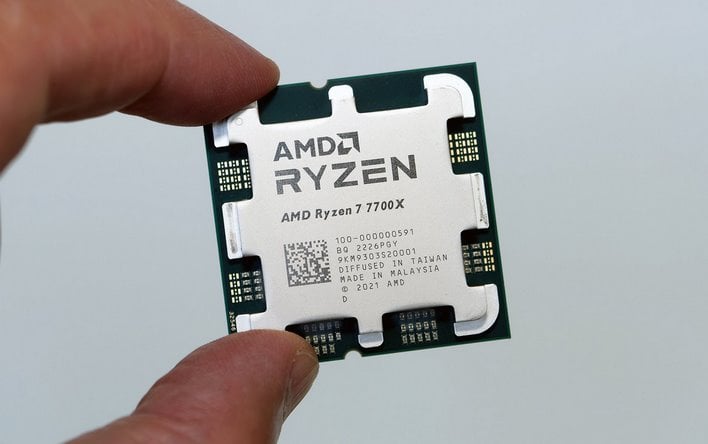AMD Ryzen 5 7600X And Ryzen 7 7700X Review: Mainstream Zen 4 Tested
AMD Ryzen 5 7600X And Ryzen 7 7700X: 3D Rendering, Audio and Video Encoding
LAME XP Audio Encoding
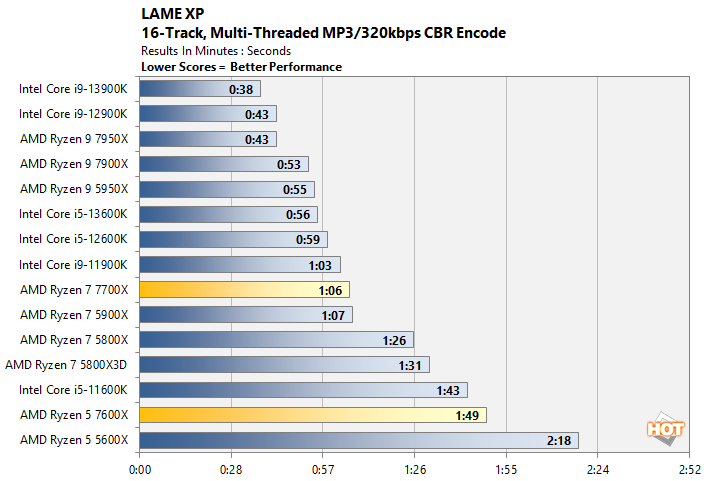
x265 Video Encoding Benchmark
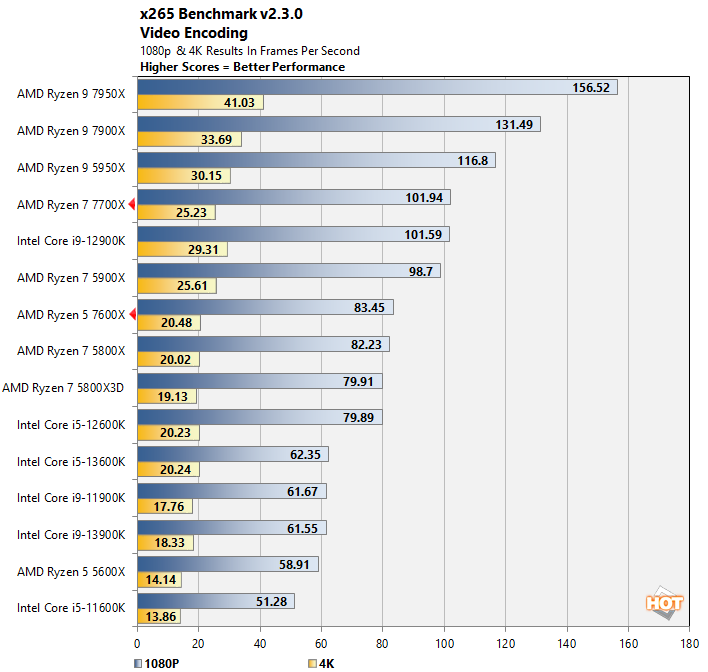
Meanwhile, unlike LAME above, the x265 encoder is a heavily mixed workload that can make use of all kinds of SIMD instructions, including AVX-512. It's in part for this reason that we see the many-core Ryzen 7000 processors clustered at the top of the chart, because they ironically support the latest x86-64 ISA extension where Intel's 12th- and 13th-generation CPUs do not.
Blackmagic RAW Video Encoding Speed
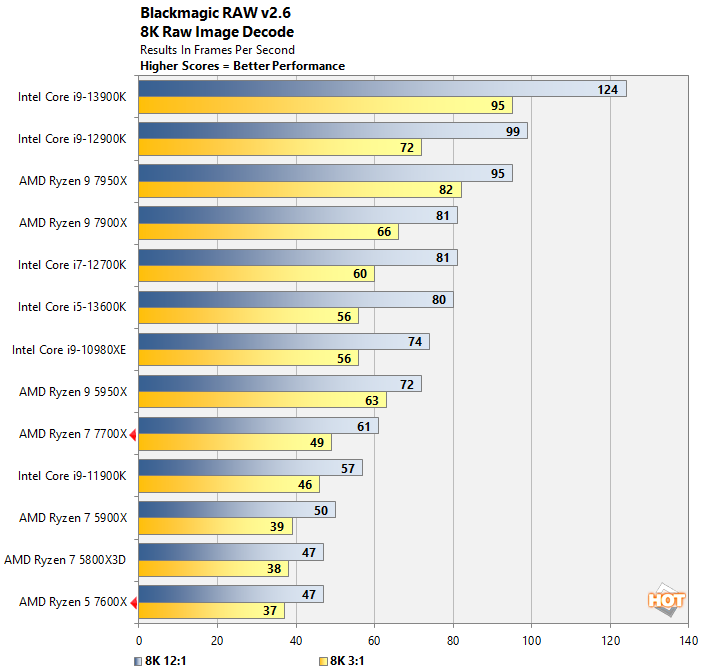
Cinebench R23 Rendering Benchmark
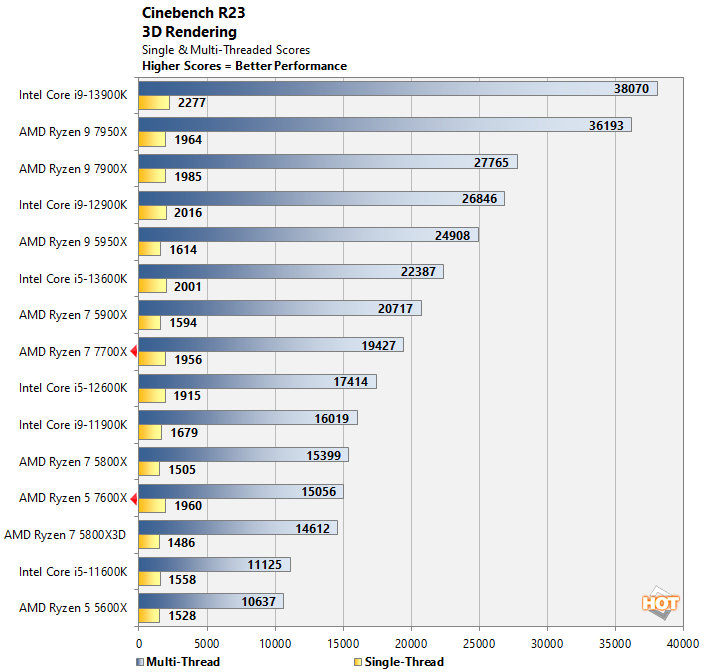
Cinebench is based on Intel's Embree renderer, and as a result, it does favor Intel a bit, which you can see in the single-threaded results. Compare the Cinebench results for Zen 4 processors to other benchmarks, such as Geekbench, and you'll see the disparity. Regardless, AMD's processors usually do well in multi-threaded Cinebench owing to their mix of high core counts and solid single-threaded performance.
POV-Ray CPU Ray Tracing Benchmark
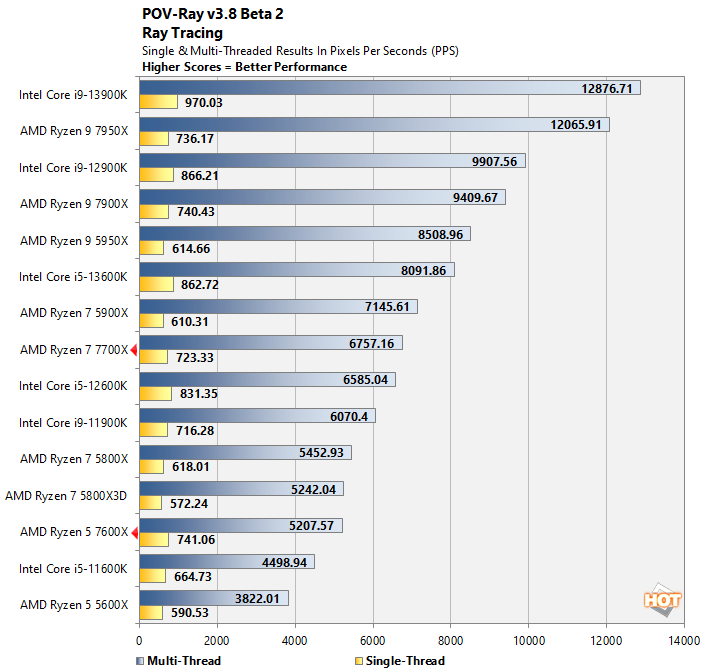
While the single-threaded performance of AMD's Zen 4 core is typically comparable to Intel's 12th- and 13th-generation parts, it stumbles here quite noticeably.
That results in a multi-threaded performance deficit, although the difference isn't as much as you might expect. It seems like POV-Ray really doesn't care for Intel's E-cores too much. That's a given in light of the floating-point-heavy nature of POV-Ray; while Intel's Gracemont E-cores are surprisingly capable in integer workloads, they fall down somewhat in floating-point math.
Blender Rendering Benchmarks
Blender is a free and open source 3D creation suite that can handle everything from modeling, rigging, and animation to simulation, rendering, compositing and motion tracking. It has a purpose-built benchmarking tool that will track the time it takes to complete rendering a particular model (or models). We used the CPU-focused benchmark with all three models currently available...
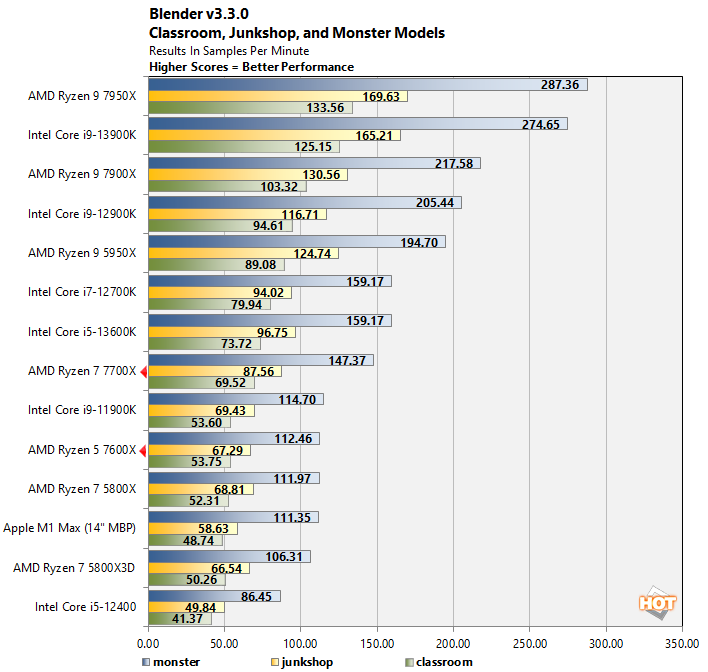
By comparison, Blender is one of our fairest benchmarks. AMD takes the top spot here, but our mid-range eight- and six-core Zen 4 CPUs don't fare nearly as well. The Ryzen 7 7700X does well against the Core i5-13600K considering it's suffering under a six-core deficit, but that processor is $100 more expensive than the Intel competition. Likewise, the Ryzen 5 7600X does pretty good considering it's only working with six cores, but that's really not enough CPU for this kind of work. Frankly, neither is eight.
Y-Cruncher Multi-Threaded Pi Calculator
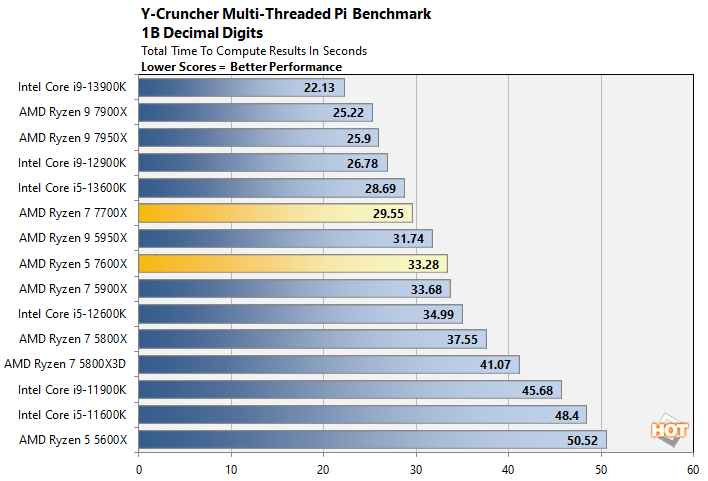
Despite being multi-threaded, Y-Cruncher is still very sensitive to single-threaded performance and cache latency. AMD's many-core Zen 4 CPUs do very well here, and the Ryzen 7 and Ryzen 5 CPUs look great in comparison to their previous-generation predecessors, but that darn Core i5-13600K is really throwing a wrench in the works here. Still, it's crazy to see a six-core CPU come in just behind a 16-core CPU on a multi-threaded test like this.
STARS Euler3d Multi-Threaded CFD Benchmark
This benchmark is multi-threaded, but is also dependent on platform bandwidth, and cache and memory latency, so the final results are not determined by compute performance alone. Cache sizes / speed and memory bandwidth affect the score as well...
